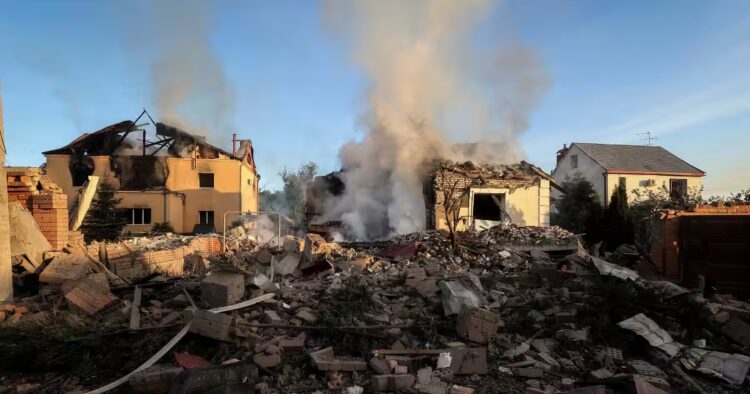In an escalation of tensions, the Ukrainian defense ministry reported on Friday that Russia has initiated a ground offensive in the northeast Kharkiv region of Ukraine.
According to the ministry, the incursion began around 5:00 am local time, with Russian forces attempting to breach Ukrainian defensive lines under the cover of armored vehicles.
Despite the initial push by Russian troops, Ukrainian forces have successfully repelled the attacks thus far. The conflict, however, continues with varying levels of intensity, indicating ongoing engagements between the two sides.

The Ukrainian defense ministry has swiftly responded by deploying military reinforcements to bolster their defenses against further Russian advances.
Reports indicate that Russian forces managed to advance approximately one kilometer near the border town of Vovchansk. This maneuver seems to be part of Russia’s strategy to establish a buffer zone along the border, potentially aiming to create a barrier against what it perceives as frequent Ukrainian attacks on Russian border regions.

The assault on Vovchansk marks a impactful development in the conflict, occurring more than two years after Russia’s initial full-scale invasion of Ukraine.
Analysts suggest that this offensive could signify Russia’s intent to carve out a buffer zone, potentially altering the dynamics of the ongoing conflict.
Russian President Vladimir Putin had previously expressed his determination to establish such a buffer zone earlier this year. He cited the need to curb what he described as frequent Ukrainian attacks on regions bordering Russia, including Belgorod.

As the situation unfolds, the international community closely watches the evolving dynamics of the conflict. The latest offensive underscores the precarious nature of the security situation in Eastern Europe and raises concerns about the possibility of further escalation in the region.
ALSO READ: “Ukraine’s President Zelensky Ousts State Guards Chief Amid Foiled Assassination Plot”
Diplomatic efforts to de-escalate tensions and find a peaceful resolution to the conflict remain paramount in light of these developments.

















Comments